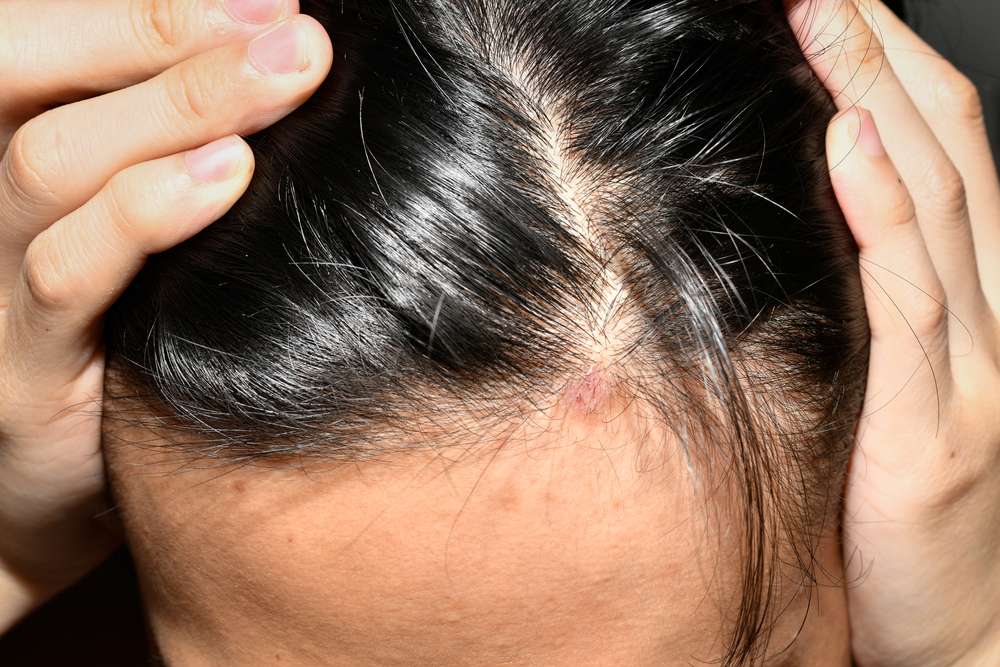Early Signs and Causes of Scalp Psoriasis You Should Know
Scalp psoriasis is a common yet often misunderstood skin condition that affects many people worldwide. It causes itching, flaking, redness, and discomfort on the scalp, sometimes spreading to the forehead, neck, or ears. Understanding what causes scalp psoriasis and recognizing its early signs can help manage flare-ups and prevent complications. This article explores key causes and symptoms to help you identify scalp psoriasis early and take action.

What are the common early signs of scalp psoriasis?
Recognizing the early signs of scalp psoriasis is crucial for prompt treatment and management. The most common initial symptoms include:
-
Dry, flaky skin: Small, silvery-white scales that may shed and fall onto clothing.
-
Itching: Mild to intense itching sensations on the scalp.
-
Redness: Patches of inflamed, red skin on the scalp.
-
Burning or soreness: A feeling of discomfort or tenderness in affected areas.
-
Hair loss: Temporary hair loss may occur in severe cases due to excessive scratching or inflammation.
These symptoms can vary in intensity and may come and go in cycles. It’s important to note that while these signs can indicate scalp psoriasis, they may also be present in other scalp conditions, making proper diagnosis essential.
What causes scalp psoriasis to develop?
Scalp psoriasis, like other forms of psoriasis, is believed to be an autoimmune condition. While the exact cause remains unknown, several factors contribute to its development:
-
Genetics: A family history of psoriasis increases the likelihood of developing the condition.
-
Immune system dysfunction: An overactive immune system triggers rapid skin cell growth, leading to the formation of plaques.
-
Environmental factors: Stress, infections, cold weather, and certain medications can trigger or exacerbate scalp psoriasis.
-
Skin injuries: Cuts, scrapes, or severe sunburns can trigger psoriasis in susceptible individuals, known as the Koebner phenomenon.
-
Hormonal changes: Puberty, pregnancy, and menopause can influence the onset or severity of scalp psoriasis.
Understanding these potential causes can help individuals identify and manage triggers, potentially reducing the frequency and severity of flare-ups.
How to tell scalp psoriasis from dandruff?
Distinguishing between scalp psoriasis and dandruff can be challenging, as both conditions cause flaking and itching. However, there are key differences:
-
Appearance: Scalp psoriasis produces thick, silvery-white scales, while dandruff flakes are typically smaller and yellowish.
-
Inflammation: Psoriasis causes red, inflamed patches on the scalp, whereas dandruff doesn’t typically cause redness.
-
Location: Psoriasis can extend beyond the hairline to the forehead, neck, or behind the ears, while dandruff is usually confined to the scalp.
-
Severity: Scalp psoriasis often causes more intense itching and discomfort compared to dandruff.
-
Persistence: Psoriasis tends to be a chronic condition with recurring flare-ups, while dandruff can often be controlled with regular shampooing.
If you’re unsure which condition you have, it’s best to consult a dermatologist for an accurate diagnosis and appropriate treatment plan.
What triggers can make scalp psoriasis worse?
Several factors can exacerbate scalp psoriasis symptoms:
-
Stress: High levels of stress can trigger flare-ups or worsen existing symptoms.
-
Cold, dry weather: Winter conditions can lead to skin dryness and increased psoriasis activity.
-
Certain medications: Beta-blockers, lithium, and antimalarial drugs may trigger or worsen psoriasis.
-
Alcohol consumption: Excessive alcohol intake can interfere with treatment effectiveness and exacerbate symptoms.
-
Scalp injuries: Harsh brushing, tight hairstyles, or chemical treatments can irritate the scalp and trigger flare-ups.
-
Infections: Strep throat or other infections can activate the immune system and worsen psoriasis.
-
Smoking: Tobacco use may increase the risk and severity of psoriasis.
Identifying and avoiding these triggers can help manage scalp psoriasis and reduce the frequency of flare-ups.
How much do scalp psoriasis treatments typically cost?
The cost of scalp psoriasis treatments can vary widely depending on the severity of the condition and the chosen treatment method. Here’s a general overview of treatment options and their estimated costs:
| Treatment | Provider | Cost Estimation |
|---|---|---|
| Over-the-counter shampoos | Various retailers | $10 - $30 per bottle |
| Prescription topical medications | Dermatologist | $50 - $500 per month |
| Phototherapy | Dermatology clinics | $100 - $300 per session |
| Systemic medications | Dermatologist | $500 - $5,000+ per month |
| Biologic drugs | Dermatologist | $10,000 - $30,000+ per year |
Prices, rates, or cost estimates mentioned in this article are based on the latest available information but may change over time. Independent research is advised before making financial decisions.
It’s important to note that health insurance coverage can significantly reduce out-of-pocket expenses for many of these treatments. Additionally, some pharmaceutical companies offer patient assistance programs for more expensive medications. Consulting with a dermatologist and your insurance provider can help determine the most cost-effective treatment plan for your specific case.
Scalp psoriasis can be a challenging condition to manage, but understanding its early signs, causes, and treatment options can significantly improve quality of life for those affected. By recognizing symptoms early, identifying triggers, and working with a healthcare professional to develop an appropriate treatment plan, individuals with scalp psoriasis can effectively manage their condition and minimize its impact on daily life.
This article is for informational purposes only and should not be considered medical advice. Please consult a qualified healthcare professional for personalized guidance and treatment.




